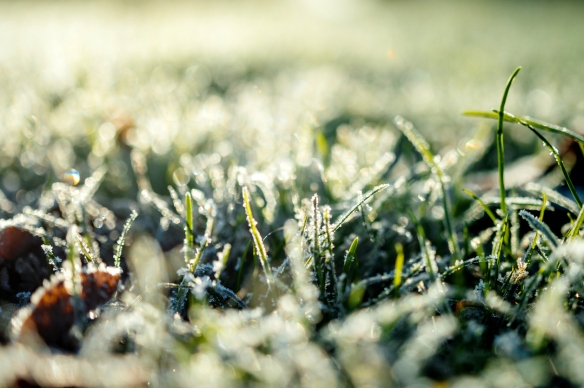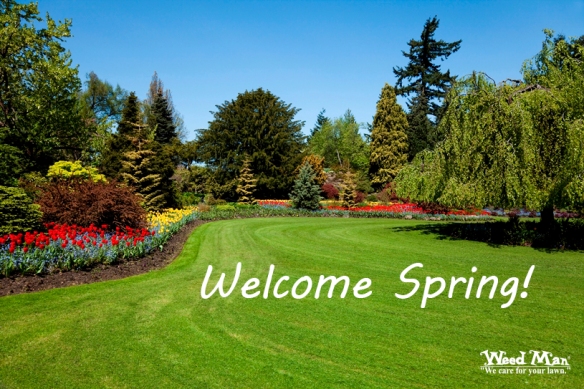Healthy grass is an amazing gift that many of us take for granted. There’s nothing quite like spending time with your family, friends, and pets on a soft, lush lawn. In fact, home lawns provide a convenient avenue for enjoying nature’s gifts without ever having to leave your property.
While you are encouraged to take advantage of your lawn’s many benefits, it is also important that you remember to give back to your grass so that it remains healthy and vibrant. With a new season of lawn care on the horizon, now is the time to start thinking about ways to upgrade your lawn care routine. Starting early with a little education and planning has been the key to success for so many of our customers – and we want to share a few tips of the trade with you.
The health of your lawn – and your ability to enjoy it – depends on good cultural practices. Consider giving your yard the gift of a professional lawn care treatment this spring, or, at the very least, modifying your current mowing and watering practices to enhance your turf. Weed Man can help you create a lawn care and maintenance plan that will help give you the lawn you’ve always envisioned.
1. Aeration
Your lawn can’t be at its greenest and healthiest without healthy soil. Soil is the foundation of all plant health and plays an important role in how nutrients become available to the turf. On many lawns – especially in cases where there is heavy foot traffic – soil often becomes hard and compacted, severely limiting the recommended 12 inches of soil. As a result, your grass may suffer from a nutrient deficiency and become thin and weed infested in a very short period of time.
Aeration can help. Unfortunately, many homeowners skip their recommended annual aeration, thinking that it is an inessential “add-on” service. This is not the case! Aeration is a critical cultural practice that helps alleviate soil compaction by pulling cores of soil out of the turf, improving air, water, and nutrient penetration into the lawn. As an added benefit, core aeration optimizes root development and reduces thatch, allowing for better drainage and greater resistance to disease. If you’re wondering how you can take your lawn care routine to the next level in 2015, consider speaking to your local Weed Man about aeration. You’ll be happy you did!
2. Overseeding
Your lawn may also benefit from an overseeding treatment. Overseeding refers to the process of planting grass seed on pre-existing turf. It may be recommended for lawns that have large, bare areas, particularly when insect and/or drought damage are at play. Far too often we see homeowners hoping for re-growth in bare areas that badly need care and advanced nutrition. Don’t wait for those grass-less areas of your lawn to fix themselves – take action and give your lawn the boost it needs.
3. Mowing
Some homeowners mistakenly believe that mowing merely provides aesthetic benefits, when, in fact, it is an important cultural practice that greatly impacts the health of a lawn. Do not take more than 1/3 of the leaf blade off in one cutting. The longer the leaf, the deeper the rooting system and the more easily your grass can absorb nutrients and water. Additionally, be sure to mow with a sharp blade. This will allow the cut tip of the leaf blade to heal quickly, preventing disease pathogens from entering the grass. As you think ahead to the coming months and your lawn care routine, consider having your mower blade sharpened by a professional. It may also be a good idea to examine the height of your mower deck to ensure you are cutting your lawn at the appropriate height for your turfgrass species (click HERE for a mowing height guide). Taking early steps now will help you start lawn care season on the right foot.
4. Watering
Watering is another essential cultural practice that affects lawn health. Like mowing, watering contributes to the development of deep roots when performed properly. Lawns require about 1 inch of water per week to remain healthy, and this should be delivered in one deep, heavy watering as opposed to several light sprinklings. Now is a great time to shop around for a high-quality sprinkler (if you do not have an underground irrigation system). Look for a model that promises even distribution of water and that will not rust quickly. Remember: read online reviews of various products and take your time. The right sprinkler will aid in lawn health and help you save water along the way.
If you give your lawn the care that it needs, it will surely reciprocate. Think ahead to the coming spring months and visualize the various ways you can give back to the yard that gives you so much enjoyment throughout the warmer seasons.
Keep those lawns healthy.
-Chris





 time I’d ever seen this. I jokingly mentioned to my wife that we might actually receive some calls from customers wanting us to treat their lawns. Don’t get me wrong, I wasn’t complaining about the nice weather (it did extend the golf season), but I knew seeing all of those weeds so late in the year would spell some headaches this spring.
time I’d ever seen this. I jokingly mentioned to my wife that we might actually receive some calls from customers wanting us to treat their lawns. Don’t get me wrong, I wasn’t complaining about the nice weather (it did extend the golf season), but I knew seeing all of those weeds so late in the year would spell some headaches this spring.


